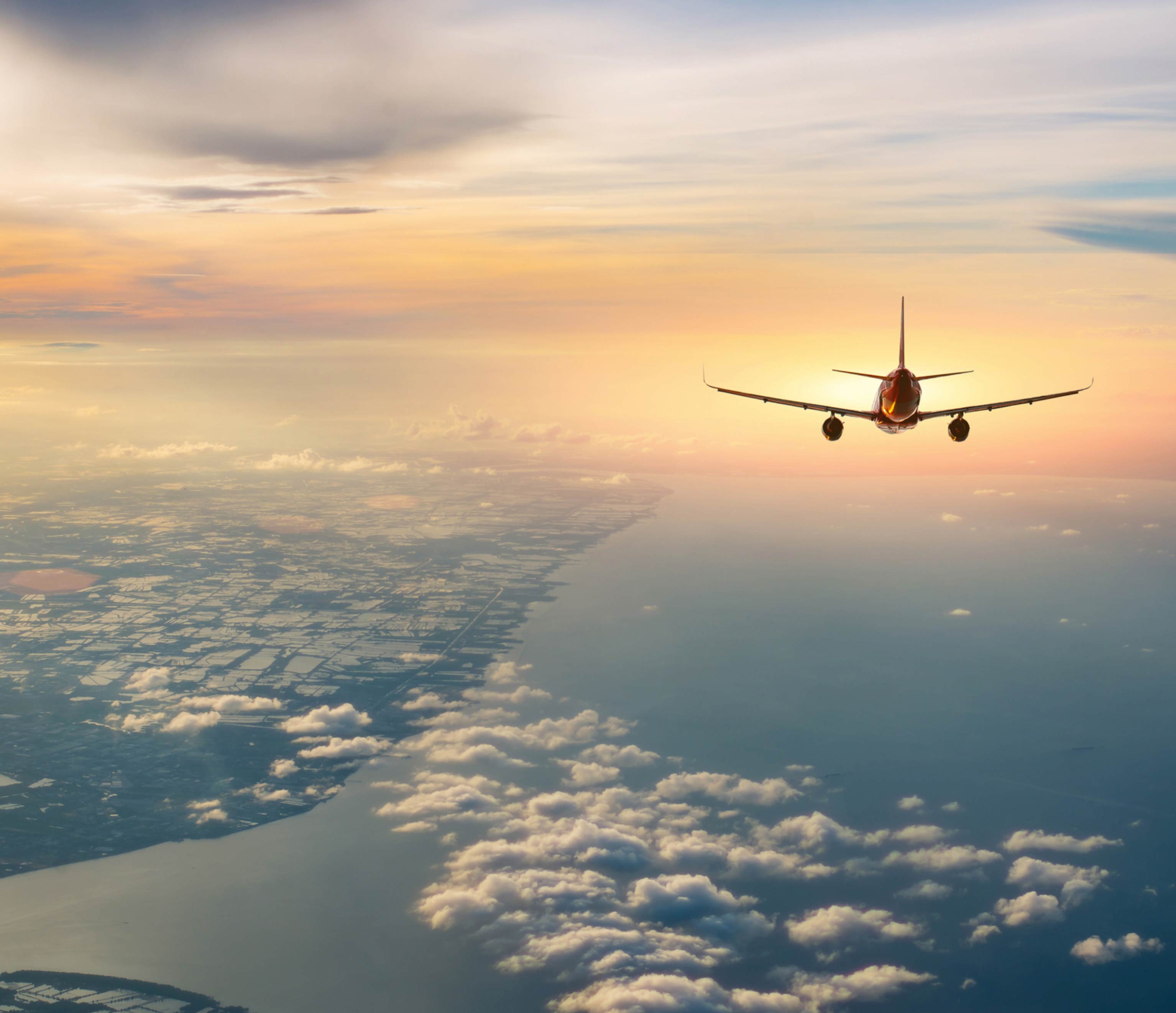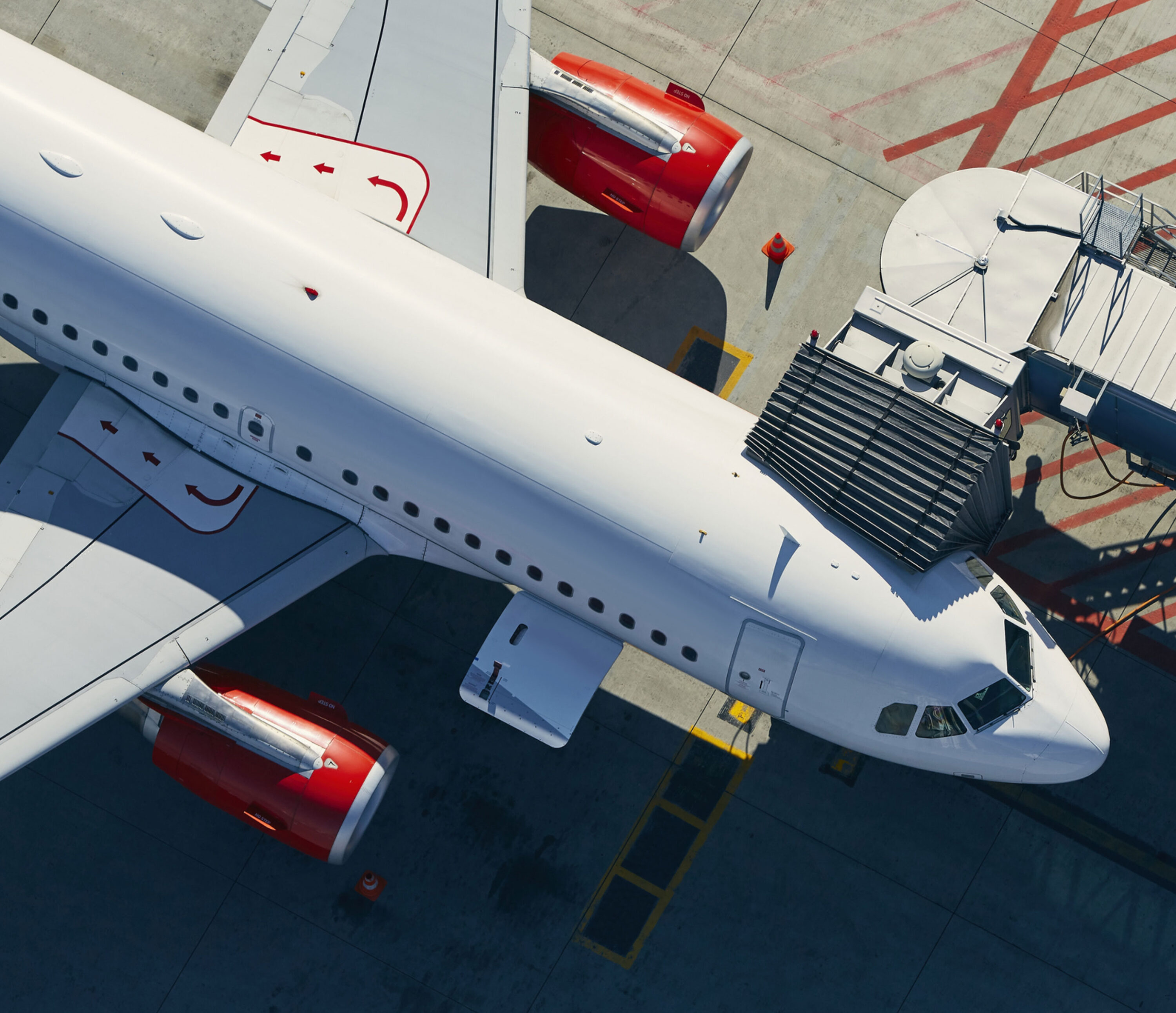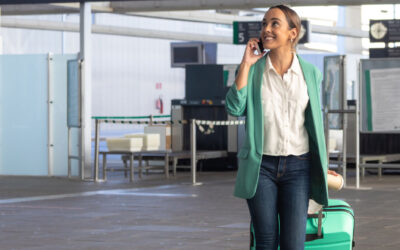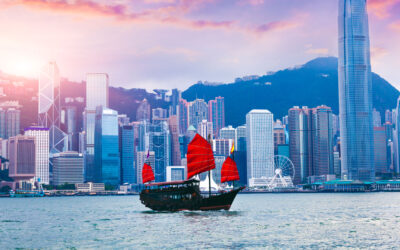Flight100: Testing the Limits of Sustainable Aviation Fuel (SAF)
reviewing Virgin Atlantic's historic flight from London to New YorkThe use and effectiveness of Sustainable Aviation Fuel (SAF) remains one of the hottest topics in business travel. Debates surrounding its implementation into the mainstream persist: Is the fuel cost-effective? Will it perform as well as its conventional, carbon-coughing counterpart? Are the environmental benefits as miraculous as some of its champions insist?
To answer these questions, and to further the scientific cause, Virgin Atlantic successfully operated the world’s first commercial SAF flight from London to New York on 28 November 2023. The Boeing 787-9, dubbed Flight100 as a nod to the 100% sustainable fuel that powered its Rolls-Royce Trent 1000 engines, was deemed a step forward in Virgin Atlantic’s commitment to decarbonising the travel industry.
Recently, the team at Virgin Atlantic published the results of their groundbreaking feat in an Executive Summary of Flight100, its opening gambit on the title page a swipe at the naysayers: “‘Sustainable Flight is Too Difficult’. Challenge Accepted”.
In this article, we take a deeper look at Virgin Atlantic’s Flight100 findings and give an overview of the key takeaways that could shape the future of SAF.
WHAT IS SAF?
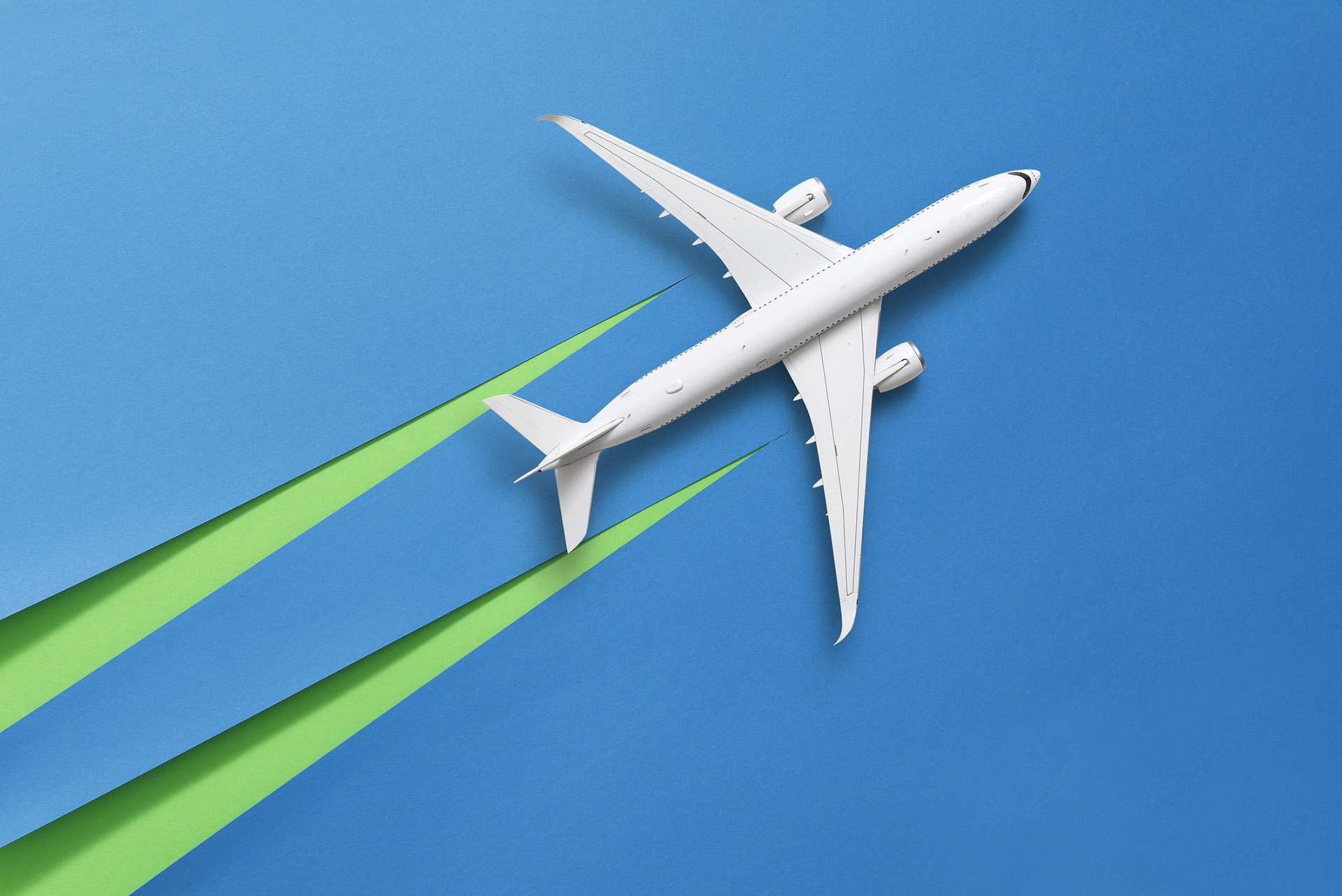
SAF stands for Sustainable Aviation Fuel. It is produced from renewable resources such as wood chips, agricultural waste, or other biomass as an alternative to traditional fossil fuel-based aviation fuels. It is considered to be greener because it has a lower carbon footprint compared to traditional aviation fuels.
The 100% SAF Operated With Equivalent Safety to Traditional Jet A-1 Aviation Fuel
Flight100 used a 100% SAF fuel blend of 87% HEFA-SPK2 made from waste fats and sourced from Air bp in the EU and 13% dextrose-based SAK3 from Virent Inc. in the US.
This SAF blend did not qualify as fuel for use in commercial aviation by the ASTM, the body that governs the international technical standard for aviation fuel.
As a result, Flight100 could not operate under normal circumstances. It required a one-off approval for a non-commercial Permit to Fly from the UK Civil Aviation Authority (CAA) and overflight approvals from Irish, Canadian, and American civil aviation authorities.
Once approved, a ground test of the engines was conducted to test the performance of SAF compared to normal Jet A-1 fuel. After 4 hours of testing different thrust settings, it was established that performance was equivalent across both fuels.
Then a ground test of the auxiliary power unit (APU) was performed to evaluate the adverse effects caused by the 100% SAF blend. An internal inspection of the APU found there to be no identifiable signs of damage or leakage caused by the Flight100 fuel.
Key Takeaways
- The flight demonstrated that a widebody long-haul aircraft using 100% SAF could operate at the same level of safety as traditional fossil fuel flights.
- No modification needed to be made to the airframe, engines, or any other components.
Key Takeaways
- SAF can reduce lifecycle carbon emissions by up to 70% when compared to fossil-derived Jet A-1.
- SAF has a material impact on lifecycle emissions but does not remove it fully.
The Flight Saw a 64% Reduction in CO2e When Compared to a Standard Journey From London
The use of renewable or carbon recycling waste products, as used in the 100% SAF blend of Flight100, delivered a reduction in end-to-end carbon emissions when compared to fossil fuels.
The Flight100 team conducted a comparative CO2e end-to-end Lifecycle Assessment (LCA), using 49 Boeing 787-9s flights between London Heathrow and New York JFK as a baseline to understand the typical carbon emission profile in tonnes. This included the emissions caused by passenger journeys to the airport, cargo activities, and fuel burn.
This baseline CO2e profile came in at 154 tonnes – of which 96% relate to Jet A-1 use. Comparatively, the use of Flight100 SAF reduced CO2e by 95 tonnes – a 64% reduction from the baseline. This includes not just the use of SAF but also the operational efficiencies that were implemented on the day such as replacing single-use plastic wraps on blankets in Premium and Economy cabins with a paper band.
However, a detailed LCA of the environmental impact of the trialled in-flight efficiencies, namely the trade-off between using renewable materials and the waste caused by them, uncovered a surprising result. The paper blanket wraps had a higher carbon footprint than the products they replaced. Plus, replacing plastic cups with a reusable alternative would contribute an additional 345 tonnes of CO2e per year due to extra weight causing a 5.5x increase in fuel burn.
There was a 4.4% Reduction in SAF Use due to Fuel Efficiency Initiatives
Flight100 aimed to maximise the benefits of SAF by materially reducing other environmental impacts compared to burning fossil fuels.
While the primary focus of Flight100 was to test the safety and usability of 100% SAF, the team also wanted to build on efficiency measures to reduce fuel burn on the ground and in the air.
By reducing the weight of the flight, reducing taxi time, implementing a continuous descent arrival, and more, Flight100 delivered 2.2 tonnes of fuel savings. While these savings are small when compared to those possible by implementing SAF into future fleets, they were still responsible for a 4.4% reduction in overall fuel burn – that equates to 4,700 tonnes of fuel savings (or 18,000 tonnes of CO2e)
Working closely with Air Traffic Management (ATM) at every stage of the flight was another key element in driving fuel efficiency. When taken together, ATM-controlled activities delivered a huge 70% of the registered fuel efficiency gains, whether that be through optimised flight routing or continuous climb and descent.
The Flight100 team acknowledged that the flight was prioritised both in the sky and on the ground which helped deliver such positive results – indeed they conceded that not having this priority would have likely increased the logged emissions.
Key Takeaways
- Flight100 delivered 2.2 tonnes of fuel-savings through 9 in-flight and on-ground fuel efficiency initiatives.
- These additional efficiencies contributed to a 4.4% reduction in overall fuel burn – that equates to 4,700 tonnes of fuel savings on a LHR to JFK route.
The reduction of CO2e when using Flight100 SAF compared to Jet A-1 fuel – a 95 tonnes difference.
%
Amount of potential fuel savings over a year (in tonnes) by adopting additional non-SAF-based operational efficiencies.
Tonnes of additional CO2e emissions when using paper blanket wrap alternatives across the product lifecycle.
The reduction of particulates from using Flight100 SAF when compared to Jet A-1 Fuel.
%
Key Takeaways
- Flight100 used a total of 34.6 tonnes of SAF on the route between London Heathrow and New York JFK, around 1% more efficient than the 34.95 tonnes of Jet A-1 a traditional flight would need.
- Flight100 SAF blend saw a 40% reduction in the size and number of particulates when compared to Jet A-1.
SAF Produced 40% Fewer Particulates Compared to Jet A-1 Fuel
Led by Imperial College London and Sheffield University, an analysis of particulate emissions was carried out to see what non-CO2 impacts were caused as a result of SAF use.
Through lab testing 100% SAF through a “proxy engine” to simulate real-life fuel combustion, scientists were able to measure the emission of particulates such as sulphur oxides (SOx) and nitrogen oxides (NOx).
Using Jet A-1 and 100% HEFA fuels as a comparison with the Flight100 SAF blend, the tests suggested a reduction in both the number and size of particulate emissions. Indeed, HEFA showed a 70% reduction in the number of particulates when compared to Jet A-1 and the Flight100 blend a 40% reduction.
In addition to these findings, Flight100 SAF showed a 1% calorific value increase in energy measurement tests when compared to Jet A-1. What this points to is: a) potentially less fuel would be needed to power flights and; b) a reduction in CO2e emissions beyond fuel savings due to improved energy output.
A 1% margin might sound small, but it represents a saving of approximately 1 million tonnes of CO2e in the context of the worldwide SAF target of 10% by 2030. In the case of the Flight100 route from London to New York, this 1% equated to around 0.35 less tonnes of fuel used.
In Conclusion
The evaluation of Flight100 demonstrated that using 100% SAF instead of traditional fossil fuels can be viable in the future. However, this viability comes with a few caveats: SAF alternatives need to be readily available to use and affordable for airlines.
In this sense, Flight100 showed that the key challenges surrounding the adoption of SAF are not operational – the 40% reduction in particulates and 64% reduction in CO2e production when compared to Jet A-1 fuel is a convincing argument for this claim.
In the meantime, Virgin Atlantic has committed to a 15% net reduction in CO2e emissions by 2030, a pledge which also includes operating 10% of their fleeton SAF.
Related Articles
How the Paris Olympics 2024 will Impact Business Travel (And What You Can Do About It)
The Olympic Games are heading to Paris in July. Over 10,000 athletes will be throwing, swimming, running, cycling, and more for the chance to grab a gold medal and write themselves into the annals of Olympic history. But with an estimated 15 million visitors planning to head to the event according to the Paris je t’aime tourist office, travelling to and within Europe for work will almost certainly be affected. In this article, we take a look at how the Paris Olympics 2024 might impact business travel and offer our expert tips and advice to help you keep your trip on course.
A New Traveller’s Guide to Better Business Trips
As a new business traveller, going on a business trip can be a daunting prospect. You are expected to ingratiate yourself with people from different cultures and embrace new ways of working. But it is also a highly rewarding experience in which you might meet lifelong connections and find opportunities to advance your career. In this article, we give our top tips to making the most of a business trip both before you leave and during your visit.
Hong Kong: A Business Traveller’s Guide
Strategically located in South China, Hong Kong offers unparalleled access to the burgeoning Asian market and is often defined as the city where East meets West. Colonial-era architecture stands proudly beside soaring modern structures, while ancient temples co-exist with bustling financial districts. This harmonious blend reflects Hong Kong’s fascinating history as a British colony that later transitioned to a Special Administrative Region (SAR) of China. In this comprehensive guide to Hong Kong for business travellers, we delve deeper into navigating the city’s unique corporate landscape, offer our top tips for getting around, and pick out our top 3 things to see or do to make your trip unforgettable.
CALL US
08448 553700
+44 (0) 1206 716111 (if outside the UK)
EMAIL US
ALWAYS HERE
Mon – Sun, 24 hours a day
LET’S TALK
Fill in the form below and we’ll get back to you as soon as we can.

